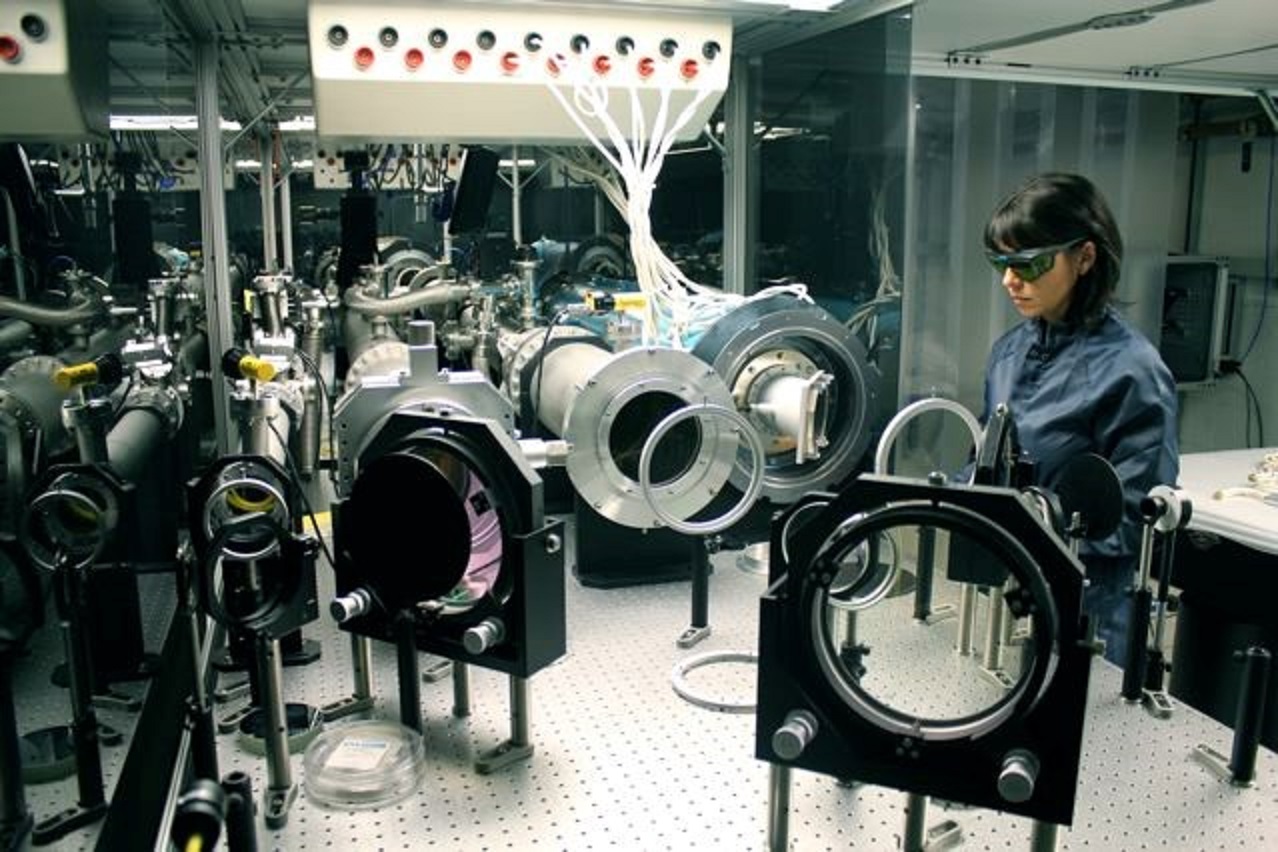UCLA is joining LaserNetUS, a consortium of the nation’s best large laser facilities established by the
Department of Energy to advance and promote laser-plasma science and provide students and
researchers with broad access to unique facilities.
The UCLA Phoenix laser facility includes one of the most energetic lasers at a university. Focusing its
beam onto a target delivers a flash of light as bright as that produced by an imaginary giant magnifying
glass the size of the Earth, collecting and focusing sunlight onto an area the size of the palm of a hand.
Heating a target with this much power creates an electrically charged gas called plasma that is hotter
than the core of the sun, and explodes as fast as a nuclear blast.
The Phoenix laser can be fired into the 20-meter long Large Plasma Device, uniquely recreating
conditions similar to those in astrophysical explosions, such as coronal mass ejections or supernovae.
Doing properly scaled physics experiments in a controlled laboratory setting can help shed some light on
the origin of cosmic rays and magnetic fields throughout the cosmos.
“The devices and diagnostics tools available at UCLA are sufficiently sophisticated and state-of-the-art so
as to provide exposure to frontier developments that require learning to work in a team environment.
These are valuable experiences not commonly available to graduate students in small university
laboratories. Yet, the size and operation are small enough for students to obtain individual hands-on
experience not available at larger scale facilities,” said physics professor Troy Carter.
Membership in LaserNetUS will also allow UCLA to support experiments relevant to laser-fusion as a
potential carbon-free and unlimited energy source for the future. The much larger National Ignition
Facility at Lawrence Livermore Laboratory has recently demonstrated the concept for the first time.
While a laser the size of NIF is required to ignite a target, the Phoenix laser will support experiments that
investigate the laser-target and chamber coupling and test the required scientific instruments.
“As part of LaserNetUS UCLA will help accelerate the advances in this field as a collective group to
transform this concept into an efficient and economical energy source. It’s an exciting time,” said
physics professor Christoph Niemann.
Carter, Niemann, and physics professor Derek Schaeffer direct the UCLA Phoenix Laser Facility.
“Time on a LaserNetUS facility is an excellent hands-on training opportunity for students, especially in
preparation for more complex experiments like those on the NIF,” said Schaeffer.
Tags: plasma
 Dr. Carmen Constantin, who built most of Phoenix’s components stands near one of the Phoenix amplifiers and one of the vacuum telescopes
that relay image the beam through the 100 ft long system.
Dr. Carmen Constantin, who built most of Phoenix’s components stands near one of the Phoenix amplifiers and one of the vacuum telescopes
that relay image the beam through the 100 ft long system.